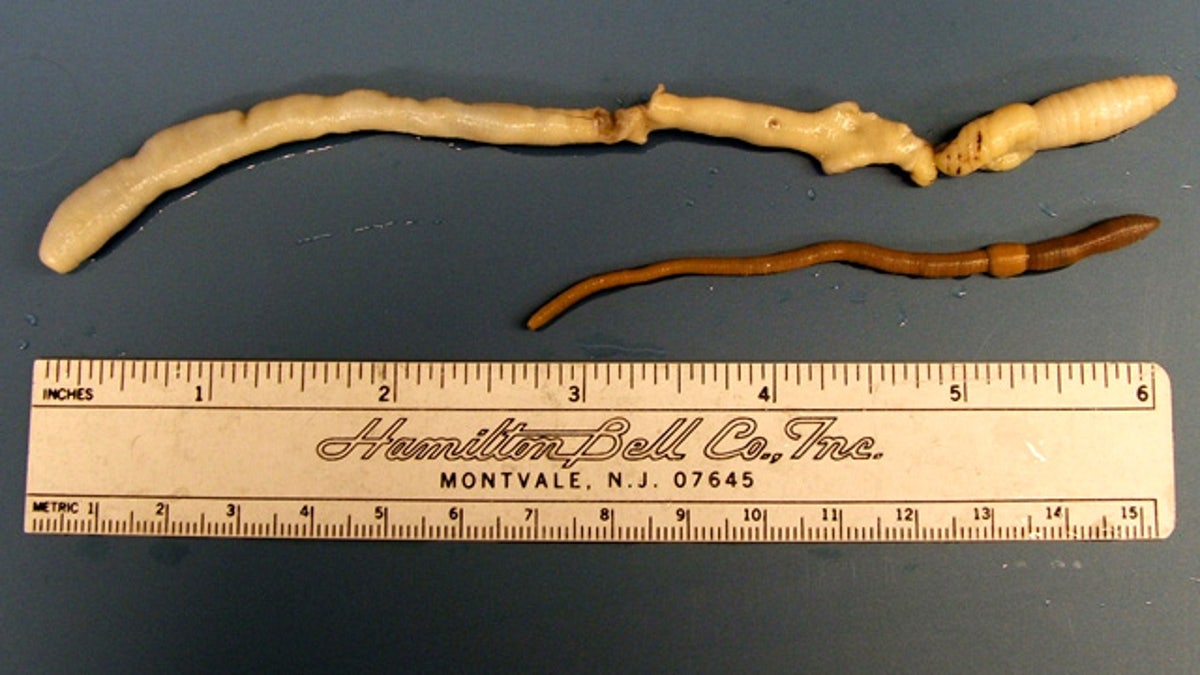
A University of Idaho graduate student found this rare giant Palouse earthworm in 2005. (Yaniria Sanchez-de Leon/University of Idaho)
SPOKANE, Wash.-- Scientists at the University of Idaho have captured two specimens of the fabled giant Palouse earthworm.
After years of searching, researchers on March 27 located an adult and a juvenile specimen of the large, fragrant worms that have become near mythic creatures in the Palouse region of Washington and Idaho.
The adult specimen was positively identified by University of Kansas earthworm expert Sam James a few weeks later.
The Center for Biological Diversity had described the earthworm, or Driloleirus americanus, as a large, pinkish-white earthworm that can grow as big as 3 feet long. According to the group's site, the worms live in permanent burrows as deep as 15 feet and are said to spit at attackers.
The group petitioned the U.S. Fish and Wildlife Service last year to grant endangered species status to the creature.
“The giant Palouse earthworm is critically endangered and needs the protection of the Endangered Species Act to have any chance of survival,” Noah Greenwald, biodiversity program director at the Center for Biological Diversity, said at the time. “Sometimes reaching three feet in length, white in color, and reportedly possessing a unique lily smell, the giant Palouse earthworm is found only in eastern Washington and northern Idaho and would be a tragedy to lose.”
But the find by Karl Umiker, a University of Idaho research support scientist, working with Shan Xu, a graduate student from Chengdu, China, gives the lie to these reports of giant spitting worms.
“When we stretched it out and relaxed it, the adult earthworm got bigger,” Jodi Johnson-Maynard an associate professor of soil and water management and Umiker’s supervisor, told the New York Times. “It’s between nine and 10 inches.”
She admits that’s a far cry from earlier claims of three-foot worms. “We tried to track that story down,” Johnson-Maynard said, and discovered that many years ago there was one giant specimen. “Apparently some boy was swinging it in the air like a rope and it stretched.”
Johson-Maynard also failed to notice the lilylike smell, but was nevertheless pleased at the finding. “Most people thought it was extinct, or that it never even existed,” she said, “like the Loch Ness monster.”
The Associated Press contributed to this report.
